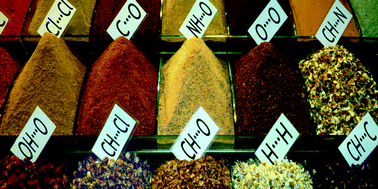Quantitative estimate of cohesion forces†
Abstract
Intermolecular contacts between organic molecules in crystals have been categorized according to the shortest distances between the van der Waals spheres. The distributions of the first, second and next shortest contacts reveal systematic changes in the role of different types of interactions in the aggregation of molecules. These distributions of the shortest contacts can be related to the specific types of cohesion forces as well as to the effect of close packing of molecules. The sequence of close contacts reflects the role of cohesion forces in a given crystal, and their contribution to the stability of crystals in general can be evaluated. Such an analysis has been applied to measure the changes in the types of cohesion forces in polymorphs and in structures undergoing phase transitions. This information is essential to understand the molecular aggregation as well as to validate the crystallographic data. It has been established for the chemical compounds investigated that their phase transitions and polymorphic modifications do not change the closest intermolecular contacts of the first order, and only higher orders of contacts are modified.


 Please wait while we load your content...
Please wait while we load your content...